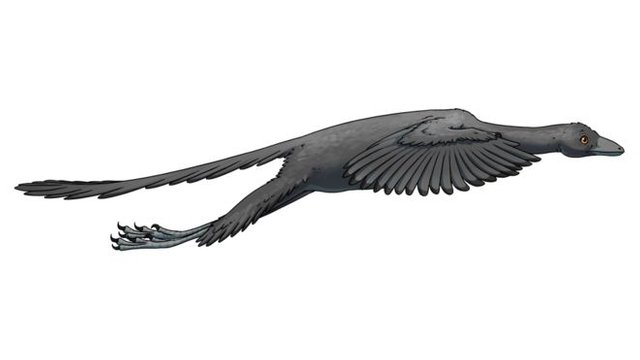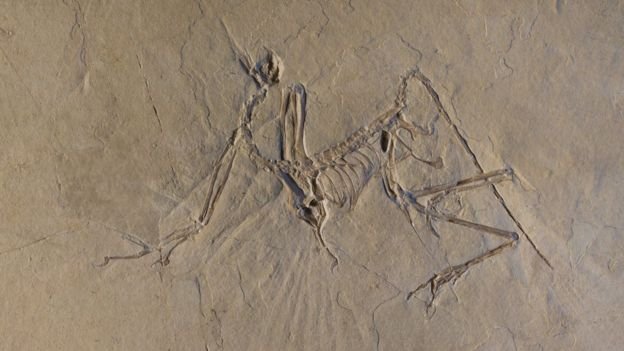
The famous winged dinosaur Archaeopteryx was capable of flying, according to a new study.An international research team used powerful X-ray beams to peer inside its bones, showing they were almost hollow, as in modern birds.The creature flew like a pheasant, using short bursts of active flight, say scientists.Archaeopteryx has been a source of fascination since the first fossils were found in the 1860s.Treading the line between birds and dinosaurs, the animal was a similar size to a magpie, with feathered wings, sharp teeth and a long bony tail.After scanning Archaeopteryx fossils in a particle accelerator known as a synchrotron, researchers found its wing bones matched modern birds that flap their wings to fly short distances or in bursts."Archaeopteryx seems optimised for incidental active flight," said lead researcher Dennis Voeten of the ESRF, the European Synchrotron facility in Grenoble, France."We imagine something like pheasants and quails," he told BBC News. "If they have to fly to evade a predator they will make a very quick ascent, typically followed by a very short horizontal flight and then they make a running escape afterwards."

The question of whether Archaeopteryx was a ground dweller, a glider or able to fly has been the subject of debate since the days of Darwin.Steve Brusatte, of the University of Edinburgh, UK, who is not connected with the study, said this was the best evidence yet that the animal was capable of powered flight."I think it's case closed now," he said. "Archaeopteryx was capable of at least short bursts of powered flight. It's amazing that sticking a fossil into a synchrotron can reveal so much about how it behaved as a real animal back when it was alive."Baby bird fossil is 'rarest of the rare''Rock star' fossil heads for JapanX-rays shine light on mystery 'bird'
Jurassic skies
Archaeopteryx lived about 150 million years ago in what is now southern Germany.
Despite once being thought of as the first bird, experts now view the animal as a flying dinosaur.
Archaeopteryx was already actively flying around 150 million years ago, which implies that active dinosaurian flight evolved even earlier.
The researchers think there may have been many experimental modes of dinosaur flight before the flight stroke used by modern birds appeared.
"We know that the region around Solnhofen in southeastern Germany was a tropical archipelago, and such an environment appears highly suitable for island hopping or escape flight," said Dr Martin Röper, Archaeopteryx curator and co-researcher of the report.
The research is published in the journal, Nature Communications.Follow Helen on Twitter.
Hi! I am a robot. I just upvoted you! I found similar content that readers might be interested in:
http://www.bbc.co.uk/news/science-environment-43386262
Downvoting a post can decrease pending rewards and make it less visible. Common reasons:
Submit
Yeah ok
Downvoting a post can decrease pending rewards and make it less visible. Common reasons:
Submit